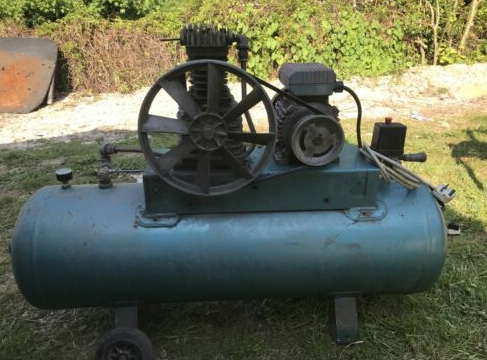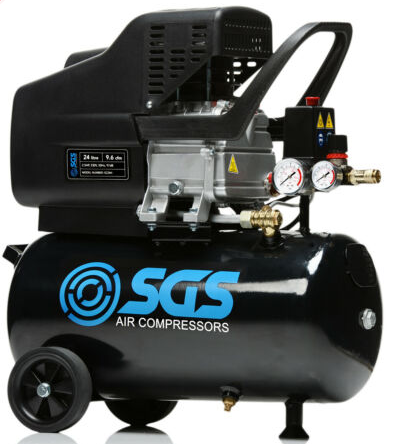threeReefs
Established Member
Compressors seem to be a topic that stimulates conversation on this forum, so here goes :
I'm looking to buy one and have the obvious choice of new or used. I would like an old one - partly because I like taking things apart when I buy them, and partly because older ones seem better made. So, something like this :

(which is on eBay at the moment, I don't want a 100L one but just to illustrate the principle) rather than this :

(with apologies to readers who do have something sensible like that).
But I've heard unpleasant horror stories about elderly compressors that have been allowed to sit with water in the tank for long periods, and as a result have rusted with unpleasant explosive consequences. I'm very conscious that 50 or 100 litres of air compressed to 100psi represents a hell of a lot of stored energy.
So, how would I check an older compressor for safety ? doesn't look easy to inspect the inside of the tank. Tapping ? Pressure testing ? And while I'm at it, any good brands to look for ? Sealey ? Clarke ? Ingersoll Rand seems to get a lot of mentions although they seem quite high-end/large (This will be probably a 25- or 50-litre single-phase for simple paint spraying, amongst other things).
Thanks !
I'm looking to buy one and have the obvious choice of new or used. I would like an old one - partly because I like taking things apart when I buy them, and partly because older ones seem better made. So, something like this :

(which is on eBay at the moment, I don't want a 100L one but just to illustrate the principle) rather than this :

(with apologies to readers who do have something sensible like that).
But I've heard unpleasant horror stories about elderly compressors that have been allowed to sit with water in the tank for long periods, and as a result have rusted with unpleasant explosive consequences. I'm very conscious that 50 or 100 litres of air compressed to 100psi represents a hell of a lot of stored energy.
So, how would I check an older compressor for safety ? doesn't look easy to inspect the inside of the tank. Tapping ? Pressure testing ? And while I'm at it, any good brands to look for ? Sealey ? Clarke ? Ingersoll Rand seems to get a lot of mentions although they seem quite high-end/large (This will be probably a 25- or 50-litre single-phase for simple paint spraying, amongst other things).
Thanks !



































